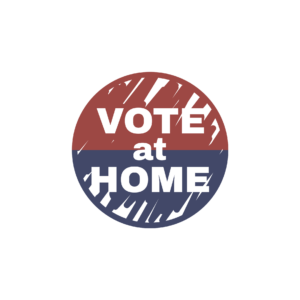With primaries in the books for more than half of the states, one unmistakable trend has emerged — states offering easy access to mail-in ballots are experiencing significantly greater turnout than their more restrictive counterparts. Average turnout in full vote-at-home states — California, Colorado, Nevada, Oregon, and Utah — in which voters are automatically mailed ballots for every election is 30%. Combine that with states where a significant voting cohort are voting absentee, and you have as much as a 10-point turnout lift when compared to states with smaller vote-by-mail populations. Meanwhile, states that require their voters to apply for a mail-in ballot for every election or to have an excuse to vote absentee are averaging 23% and 18% respectively.
These figures on their own are unimpressive. It has long been a disappointing trend in U.S. elections that turnout surges during presidential elections then trails off in primaries and other contests, often at embarrassingly low rates. We should strive to boost turnout in non-presidential elections as more localized races have a greater bearing on citizens’ day-to-day lives.
However, the fact that states with more expansive vote-by-mail policies are trending as high as 10 percentage points on average when compared to states with more restrictive policies should be reason for lawmakers to consider removing barriers to accessing mailed-out ballots.
In just this past month, Rhode Island, Massachusetts, and Delaware have all enacted laws to eliminate the requirement that voters have an excuse to vote by mail. These are three states with long traditions of going to the polls with the exception of temporary pandemic-era policies that made it easier for their electorate to obtain mailed-out ballots, during which they experienced record turnout compared to previous presidential elections. Their recent move to go “no excuse for all” reduces the portion of the U.S. electorate that needs an excuse to vote absentee to only 13.4% — and the remaining 14 states that still require a justification should follow suit.
Applause for these major milestones has been tentative, however. Republicans have filed a lawsuit against Massachusetts’ VOTES Act, which was recently signed into law by Republican Gov. Charlie Baker, questioning its constitutionality. Meanwhile Republicans in Rhode Island and Delaware have also hinted at legal action against their respective vote-by-mail laws. Among criticisms of Massachusetts’ new law, 6th Congressional District Candidate Bob May said the motivation behind its passage is to give a boost to Democratic incumbents.
Claims that vote-by-mail election outcomes benefit Democratic candidates are nothing more than fallacies fueled by misinformation. Research conducted at Stanford University found no partisan lean when examining election outcomes in California, Washington, and Utah. Plus, Massachusetts has long been controlled by a Democratic majority, under far less mail-in-voting-friendly circumstances.
Montana, where nearly 90% of its voters cast vote-by-mail ballots, has the highest turnout to date for the 2022 primaries at 39%.
Even in Nebraska, another Republican stronghold, the 11 mostly rural counties that have opted into a full vote-at-home model are seeing the advantage of automatically mailing ballots to their voters. Turnout in those counties averaged 55% in their May 10 primary, more than 20% higher than the remainder of the state. Similarly, North Dakota’s 42 vote-by-mail counties are averaging greater than 6% higher than its 11 polling-place counties.
And in Oregon’s May 17 closed primary, meaning only Republicans and Democrats could participate in their respective party elections, turnout for both parties exceeded 50%. Although Oregon, like Massachusetts, has a strong Democratic majority, both parties benefited from the ease and convenience of voting by mail.
Bottom line: Vote-at-home elections ensure equitable access for all; they do not favor one party or voting group.
Lawmakers of all political persuasions should be pursuing policies proven to boost turnout across demographics. A recent study of mail-ballot use and voter participation found that turnout increased an average of 5.6% during the 2020 presidential election in states that mailed a ballot to every registered voter. The effects of mail-ballot delivery were even greater in jurisdictions with historically low mail-ballot usage, boosting turnout by as much as 8%. Even in the primary elections that have taken place so far this year, states with strong vote-at-home models are clearly outperforming less advanced states.
It’s high time lawmakers put aside conspiracy theories and partisan quibbling and enact reforms proven to drive participation in our democracy from all corners of our country.
###
Lori Augino is the executive director of National Vote at Home Institute, a nonpartisan 501(c)(3) organization dedicated to improved access to and confidence in vote-at-home election systems. She previously served as the Washington State Elections Director from 2013-2021 and the 2020-2021 president of the National Association of State Election Directors.


